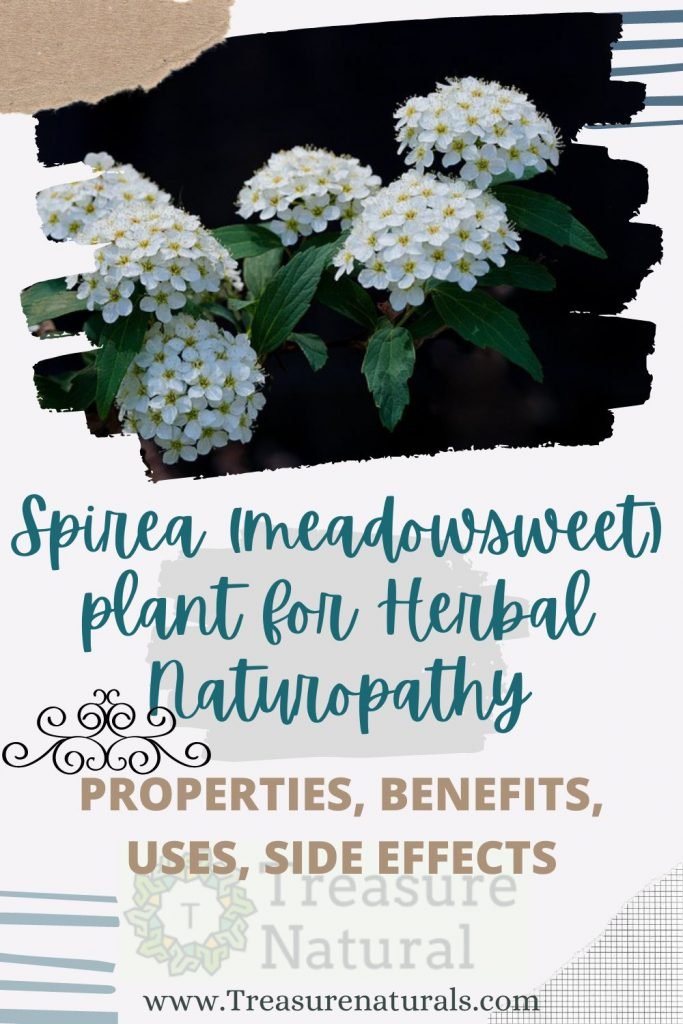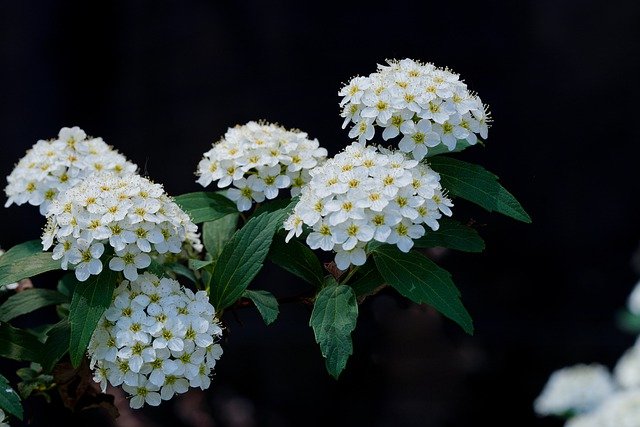
Spirea (Filipendula ulmaria) is a plant of the Rosaceae family. Known for its anti- inflammatory and diuretic properties, it is useful against joint pain and fever. Let’s find out better.
Properties of spirea
The flowers and flowering tops of the spirea are used in phytotherapy in the treatment of joint pain, fever and flu due to its anti-inflammatory, diuretic and antispasmodic properties. Its phytocomplesoo contains salicylic derivatives (salicylic aldehyde, methyl salicylate, ethyl salicylate) well known thanks to acetylsalicylic acid, active ingredient of aspirin, flavonoids, vitamin C, essential oils and mineral salts.
Considered together with willow, the “vegetable salicylate“, the plant has an anti-inflammatory, analgesic and antipyretic action, because it inhibits the synthesis of prostaglandins (PGE2), responsible for pain and the inflammatory process of the tissues. It is therefore used in case of fever and to relieve painful states caused by arthrosis, rheumatoid arthritis, joint pain, headache, toothache, back and neck pain.
However, unlike synthetic anti-inflammatory drugs, it does not have an ulcerogenic action (gastritis, ulcer), a side effect of this category of drugs. The presence of mucilages, in fact, gives the spirea a protective action for the mucous membranes, capable of reducing spasms and erosive processes of the gastric walls.
Recent studies demonstrate the immunomodulating properties of spirea, because it is capable of suppressing various abnormal reactions of our antibodies that cause the release of histamine and consequent attacks of our own immune system, characteristic of autoimmune diseases.
Due to the presence of flavonoids (quercetol-4-glucoside, quercetol-3-galactoside), it is also used in the treatment of water retention and edema. Its use is therefore useful in the treatment of cellulite, because it exerts a vasoprotective action on the walls of blood vessels and thinning the blood, with a decongesting effect on the circulatory system.
Finally, due to its diuretic and purifying properties, which favor the elimination of metabolic waste (nitrogenous waste, uric acids, sugars, triglycerides), which poison the body and retain liquids, it is effective in the treatment of diabetes, obesity and ‘hypertension.
How to use
INFUSION
It is good to remember that for the preparation of the infusion, boiling (but hot) water must not be used because salicylic acid is thermolabile and is destroyed with heat.
1 level spoonful of flowered spirea tops, 1 cup of water
Pour the mixture of leaves and flowers into the hot water and turn off the heat. Cover and leave to infuse for 10 minutes, then drink to relieve joint pain, flu or inflammatory states.
2 capsules or tablets of dry extract before the two main meals
Contraindications of spirea
The intake of spirea is contraindicated in subjects with ascertained hypersensitivity to acetyl-salicylic acid and in those who are being treated with cardioaspirin or blood anticoagulants, to avoid an enhancement of the effect of the drugs.
Description of the plant
Perennial herbaceous plant with creeping rhizome, up to 150 cm high. The leaves are deciduous, toothed or lobed, dark green on the upper side, whitish on the lower one. The flowers are white or pink, small and collected in showy inflorescences, called corymbs. The fruits are small capsules.
The habitat of the spirea
The spirea grows well in humid places (hence the name of marsh meadowsweet) of the continental regions, from the plain up to 1500 m of altitude. It is missing in the Mediterranean coastal areas.
Background

The botanical name derives from the Greek speira, because the shape of the fruit is “spiral“.
It was one of the sacred herbs most highly regarded by the Druids, but it is not known if it was also used for its medicinal properties.
In the Renaissance, spirea was for a long time a popular remedy in many European countries, then it fell into oblivion, until it was rehabilitated by a country priest, for the successes obtained against dropsy or excess of lymphatic humors, according to the Theory Humoral of Hippocrates.
The therapeutic importance of this plant became notable when around 1845, Hermann Kolbe was the first to isolate salicylic acid by distillation from the flowers. On March 6, 1899, combining the prefix ” a- ” (for the acetyl group) with ” -spirin ” (from spirea, from which salicinic acid is obtained), Bayer patented the name ” aspirin “, the active principle of acetylsalicylic acid to be put on the market.






